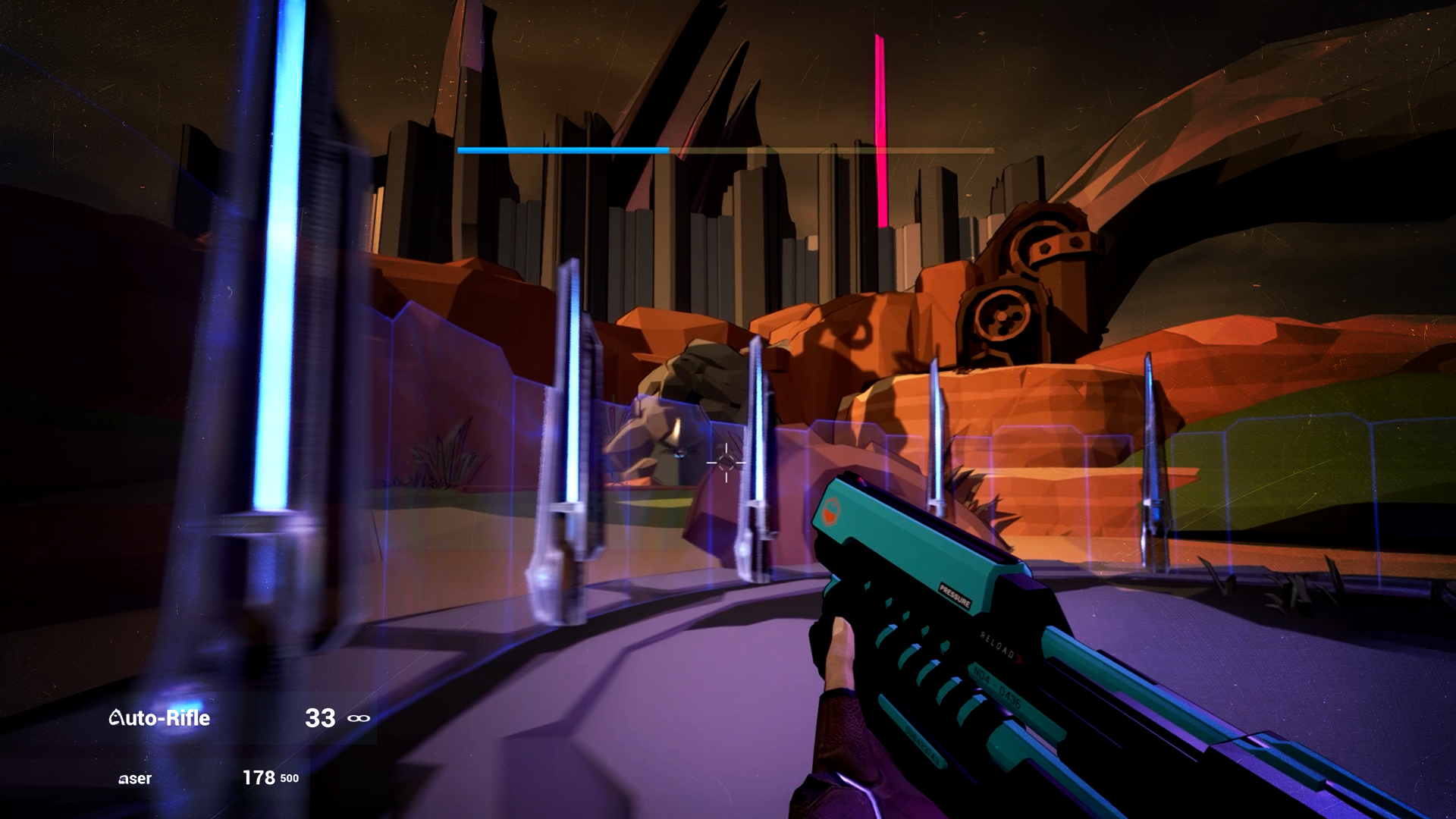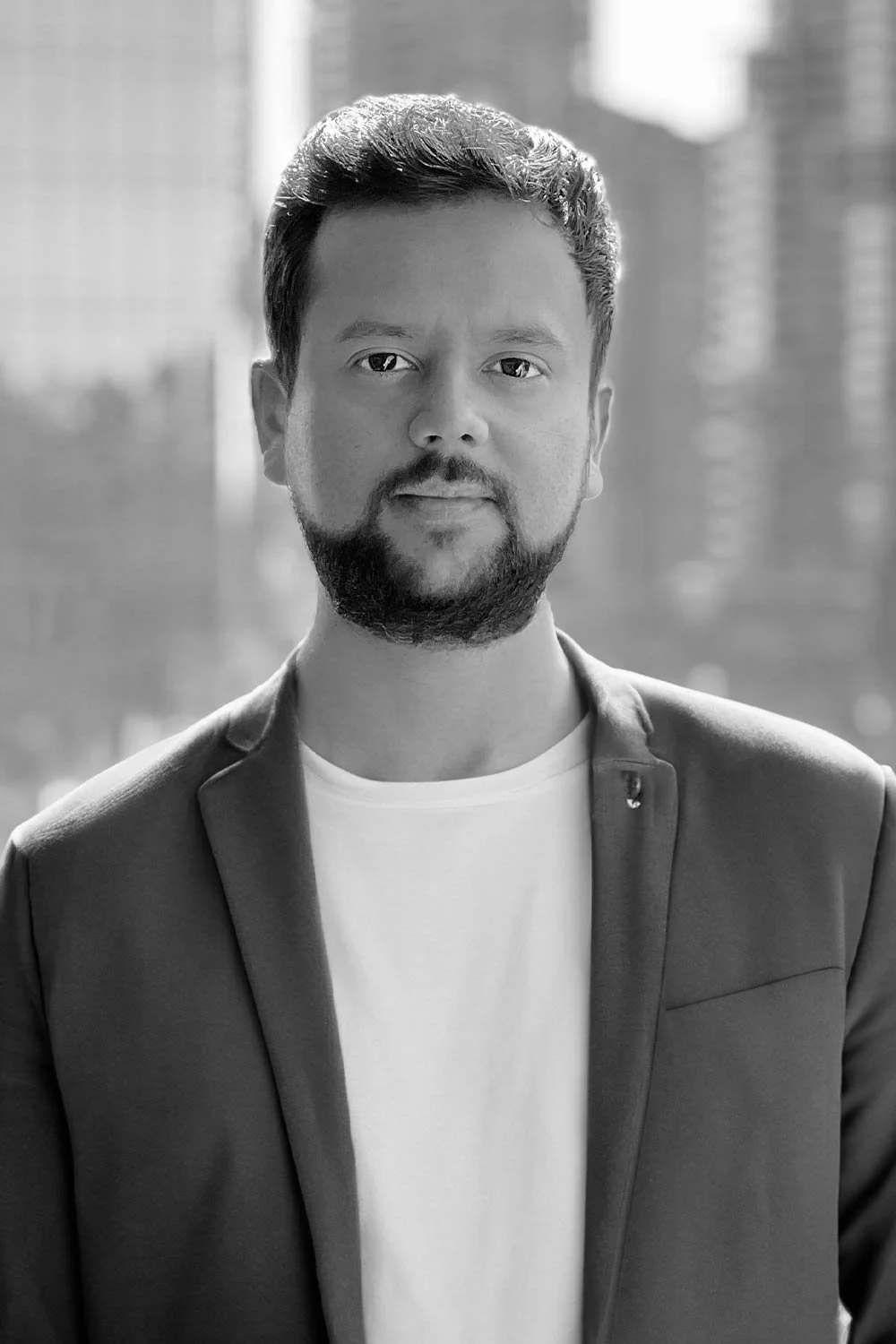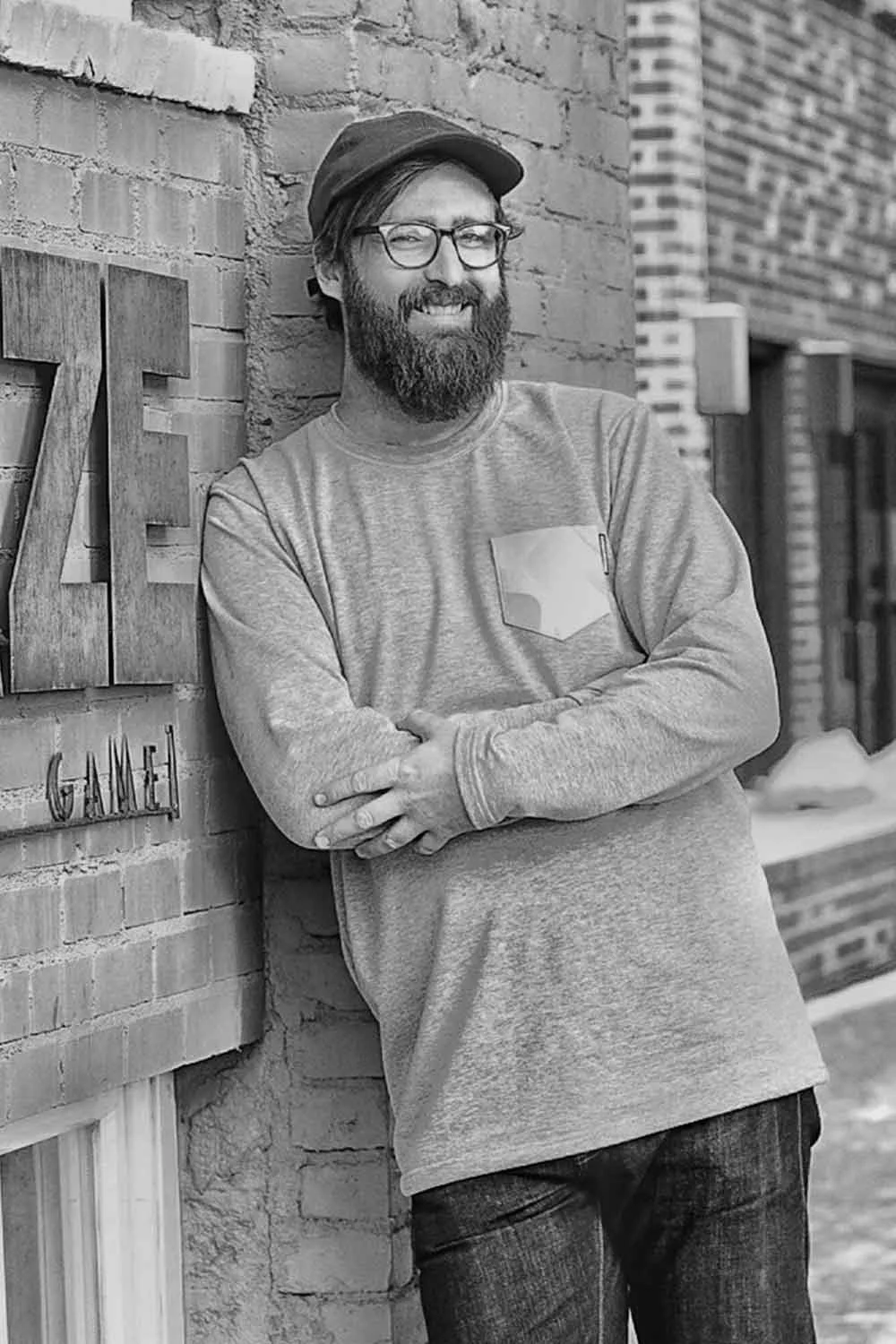




WHY THIS MODEL
The distance betweenclassroom and studioshould feel small.
Every brief, critique, and checkpoint is designed to mirror the language and expectations of real production — so the first day on the job feels familiar, not overwhelming.
METHOD FIRST · TOOLS SECOND · OUTPUT ALWAYS











CEA Academic Partner Alumni Success.
Why study with CEA?
Programs built around pipelines and the next decade of creative work.
CEA programs connect you to real production, real tools, and the industries growing fastest – from 3D and VFX to games, virtual worlds, and immersive systems.



PROGRAM IMPACT
Build studio-ready habits early — and keep them for your whole career.
Curriculum, critique, and cadence are designed to feel like a first job: real briefs, real deadlines, and feedback that pushes craft without breaking momentum.
Up to
24 months
of structured, production-grade training inside a single arc.
Across
6 terms
each designed as a clear step up in responsibility and rigor.
PROGRAM 01 · FOUNDATIONS
Foundations. Your entry point into creative technology.
Build core skills in drawing, design thinking, visual literacy, and 3D basics while learning how production actually works.
Ideal for students who feel the pull toward 3D, VFX, games, or film and want a confident, structured start.

PROGRAM 02 · ADVANCED 3D
3D Production. Assets that belong in a modern pipeline.
Train in modeling, sculpting, surfacing, lighting, and lookdev using Maya, ZBrush, and Substance tools to take work from blockout to studio-ready.
Graduate with a focused, production-aware portfolio that speaks the language of real 3D teams.

PROGRAM 03 · ADVANCED VFX
Visual Effects. Compositing, FX, and invisible integration.
Work in Nuke, Houdini, and Maya to learn matchmoving, CG integration, and shot-based FX for film and episodic pipelines.
Build sequences that feel believable, grounded in story, and strong enough to anchor a reel.

PROGRAM 04 · ADVANCED GAMES
Game Development. Systems, interaction, and play that feels right.
Prototype mechanics, systems, and loops in Unity and Unreal. Learn how readability, responsiveness, and feel shape the player experience.
Ship playable builds that show collaboration, iteration, and clear design intent.

PROGRAM 05 · ADVANCED FILM
Film Production. Stories built for the screen.
Develop directing fundamentals, cinematography, and editing using professional workflows—from concept and boards to final cut.
Create short-form pieces that show you can lead a story from first idea to finished frame.

PROGRAM 06 · ESPORTS PRODUCTION
Esports. Live shows built around competitive play.
Learn how live esports broadcasts come together—observer feeds, overlays, camera calls, replays, and on-air pacing for real events.
Build mock shows and content packages that feel ready to drop into a live production truck.

















WHAT STUDENTS LEAVE WITH
Not just a reel — a repeatable way of working.
Portfolio-ready pieces
8–12
curated, not cluttered — built to map cleanly to real roles.
Production critiques
200+
notes across terms, teaching how to listen, iterate, and ship.
Tool fluency
Full stack
from DCCs to real-time engines, grounded in pipeline thinking.
CEA Academic Partner
Professional discovery
& personal growth.
CEA Academic Partner students don’t just learn software. They learn how to think, behave, and communicate like working artists — with the knowledge, skills, confidence, and mindset to hold their own in real studios.
Aspect 01 · Knowledge
Knowledge that connects the dots.
Students stop memorizing buttons and start understanding systems: how pipelines fit together, why roles exist, and where their work lands once it leaves their desk.
In practice, this looks like:
- Explaining choices in terms of story, pipeline, and audience.
- Seeing how 3D, VFX, games, and film share core ideas.
- Translating classroom tasks into production language.
Aspect 02 · Skills
Skills you can lean on under pressure.
Craft moves from “lucky one-off” to repeatable process. Students learn to scope work, pick the right tool for the job, and ship results that stand up to critique.
In practice, this looks like:
- Breaking complex tasks into simple, trackable passes.
- Choosing workflows for reliability, not novelty.
- Delivering files that are clean, readable, and ready to hand off.
Aspect 03 · Confidence
Confidence built on evidence, not ego.
Confidence comes from reps and results, not hype. Students see their own progress across projects and learn to trust their method when a brief feels bigger than their comfort zone.
In practice, this looks like:
- Starting before every detail is figured out.
- Recovering from missteps without freezing or hiding.
- Owning both strengths and gaps in an honest way.
Aspect 04 · Professionalism
Professionalism that teams can rely on.
Students learn what “being professional” actually looks like day to day: predictable communication, steady pace, and a respect for the larger production they’re part of.
In practice, this looks like:
- Showing up prepared, with work staged for review.
- Meeting milestones without last–minute chaos.
- Treating feedback and deadlines as shared responsibilities.
Aspect 05 · Communication & Critique
Communication that turns notes into action.
Critique becomes a tool, not a threat. Students separate themselves from the work, ask better questions, and convert vague comments into clear, prioritized next steps.
In practice, this looks like:
- Listening for intent behind a note, not just the wording.
- Reframing feedback as a checklist, not a personal attack.
- Summarizing what will change before leaving a review.
Aspect 06 · Psychology & Mindset
Mindset built for a long career.
The work gets demanding; the mindset has to keep up. Students learn how to manage comparison, stay curious, and keep moving through the inevitable dips in motivation and clarity.
In practice, this looks like:
- Using constraints as creative fuel, not excuses.
- Building routines that support deep work and recovery.
- Seeing progress as a path, not a single “big break.”
Elevate
The Artist.
Innovate
The Method.
Empower
The Industry.
VFX FOR FILM
From first idea to final frame.
A full cinematic pipeline, mapped from story spark to graded, delivered master. Each stage shows what’s really happening in the work, so students learn to see VFX as a connected production system—not scattered tricks.
Stage 01 · Foundations
Story & Concept clarifying what the film is about.
Ideas move from loose notions into a concrete creative brief. Writers, directors, and VFX leadership define tone, genre, key moments, and why VFX exists in the story. The goal is a shared statement of intent everyone can point to when decisions get hard.

Stage 02 · Visual Language
Art Direction and worldbuilding rules.
Art directors and production designers define shape language, color palettes, and visual rules for the world. Keyframes, mood frames, and style bibles show where reality ends and stylization begins. VFX uses this as a north star for every asset, shot, and simulation that follows.

Stage 03 · Previsualization
Design, Boards & previs for complex beats.
Storyboards, animatics, and full 3D previs test camera angles, timing, and staging for complex sequences. Directors explore options cheaply in pixels instead of on set. VFX supervisors use previs to flag technical risks early and to estimate the real cost of ambitious ideas.

Stage 04 · Planning
Technical breakdown into shots and passes.
Every sequence is broken into specific VFX shots. Teams decide what will be practical, digital, or hybrid, and how plates, passes, and data will be captured. Bids, schedules, and shot counts emerge here—this is where the pipeline is tuned to the actual film.

Stage 05 · Virtual Production
VP prep for LED and real-time stages.
For LED volumes and real-time workflows, VFX teams prepare environments, layouts, and interactive elements that will drive in-camera visuals. Tracking, lens calibration, and engine performance are tested so directors can work inside responsive worlds on the day.

Stage 06 · Production
Principal photography with VFX in the plan.
Cast, camera, and physical production come together. VFX is woven into choices about lenses, blocking, lighting, and coverage. Clean plates, reference passes, and practical elements are captured while staying inside schedule—avoiding expensive rescue work later.

Stage 07 · Data Capture
On-set VFX HDRI, LIDAR, and reference.
VFX data wranglers capture HDRI lighting spheres, lens grids, tracking markers, and camera reports. LIDAR or photogrammetry sessions scan sets and props. Texture charts, gray balls, and chrome balls lock down how light behaves for later 3D matching.

Stage 08 · Asset Build
Models & worlds built to production spec.
Modelers, texture artists, and lookdev teams build everything that will exist only in pixels: creatures, vehicles, props, environments, and set extensions. Assets are sculpted, UV’d, textured, and shaded to hold up at required distances. Clean topology and naming prevent downstream rigging and simulation pain.

Stage 09 · Motion
Animation & simulation in context.
Character animators, layout artists, and FX TDs block motion, refine performance, and run sims for cloth, hair, destruction, fluids, and atmospherics. Timing is checked against edit and sound so every beat lands where it should emotionally.

Stage 10 · Integration
Lighting & rendering that match plate photography.
Lighters match exposure, direction, and mood using HDRI and reference photography. Render farms output layered passes tuned for flexibility in comp. Attention shifts from “cool images” to believable integration with the original cinematography.

Stage 11 · Compositing
Shot finaling and continuity passes.
Compositors assemble plates, renders, and matte paintings into unified shots. Edges, grain, lens distortion, and atmospherics are balanced so nothing betrays the trick. Shots are only “final” when they work in sequence, not just as stills.

Stage 12 · Delivery
Color, finishing & mastered outputs.
Final VFX shots are conformed into the locked edit. Colorists balance the grade so VFX, live action, and titles sit together. QC, retimes, and versioning are handled. The pipeline closes with delivery of masters to distributors and platforms.

PROGRAM AT A GLANCE
A clear structure. Predictable progress.
24
Months
full program length
6
Terms
structured progression
4
Pathways
3D · VFX · Games · Film
8–12
Portfolio Pieces
refined, not excessive
200+
Critiques
across terms and reviews
Full Stack
Tool Fluency
DCCs + real-time engines
CEA Academic Partner
The people behind the process.
The Centre for Entertainment Arts Academic Partner team combines production experience, pedagogy, and technology. These are the people who design the processes, critiques, and routines that help students think, make, and behave like working professionals.
Academic Leadership
Michael Bradbury
Director of Education
With a BSc Hons in Game Design, PGCE, NPQSL, MA in Education, and a PhD in progress in Digital Transformational Education, Michael is a specialist in gaming education and curriculum design. As the first Unreal Authorized Instructor in the UAE, he plays a pivotal role in Dubai’s emerging games ecosystem, collaborating with industry and government to deliver advanced Unreal Engine training. Michael focuses on building robust curriculum structures and supplemental content libraries that empower instructors, sharpen pedagogy, and keep academic quality tightly aligned to industry needs.
Michael is a specialist in gaming education and curriculum design with degrees in game design and education, and a PhD in progress in Digital Transformational Education. As the first Unreal Authorized Instructor in the UAE, he links industry, government, and academia while building curriculum and content libraries that keep teaching tightly aligned to real production needs.

Innovation & Technology
Jamie McClenaghan
Director of Innovation and Technology
Jamie is a game developer, educator, and tech innovator with a Computer Science degree from the University of Cambridge. A well-being app he built during the pandemic quickly gained traction in schools, cementing his reputation as a practical problem-solver. He now connects creative technologists across Europe and the Middle East, using games and interactive experiences as tools for transformation. Guided by empathy and resilience, Jamie treats curiosity and iteration as core professional skills, showing students how bold ideas and disciplined execution can drive real change.
Jamie is a game developer, educator, and tech innovator with a Computer Science degree from the University of Cambridge. After his well-being app gained traction in schools, he began linking creative technologists across Europe and the Middle East, using games and interactive experiences to drive change. He teaches students to pair bold ideas with disciplined iteration.

VFX & 3D
Priyank Murarka
Director of VFX & 3D Programs
Priyank leads CEA’s Visual Effects and 3D programs, drawing on more than a decade of experience as both a VFX artist and senior production leader. He designs curricula that fuse technical rigor with creative storytelling, preparing students for real roles on film, series, and cinematic projects. Priyank reinforces industry readiness through guest workshops, exposure to current tools and workflows, and deliberate career mentoring — helping students understand how to build portfolios that speak the language of modern VFX and 3D pipelines.
Priyank leads CEA’s Visual Effects and 3D programs, drawing on over a decade as both VFX artist and production leader. He designs curricula that fuse technical rigor with storytelling and uses guest workshops, current tools, and focused mentoring to help students build portfolios that speak studio language.

Animation
Jon-Jon Atienza
Director of Animation Programs
Jon-Jon is an animation and FX artist whose credits include award-winning shorts such as “Skin for Skin” and the Oscar-nominated National Film Board short “The Flying Sailor.” After more than a decade with Fifteen Pound Pink Productions, he now teaches full-time at Bow Valley College’s Centre for Entertainment Arts. Jon-Jon emphasizes character, form, and performance, helping students understand how subtle choices in motion and design can bring animated work to life — and how to carry that craft into both independent and commercial production environments.
Jon-Jon is an animation and FX artist whose work includes “Skin for Skin” and the Oscar-nominated NFB short “The Flying Sailor.” After more than a decade at Fifteen Pound Pink Productions, he now teaches full-time, focusing on character, form, and performance to help students bring animated work to life.

Film
Subhadarshi Tripathy
Director of Film Programs
Subhadarshi is a media and entertainment executive with more than 20 years of experience building global content platforms. His track record spans trend analysis, collaboration with high-calibre production teams, and delivering shows and formats that travel. He has received the Prix Jeunesse and the Asian Television Awards’ Best Talk Show Award, and served as lead animator on India’s first animated feature. His short film “Another Reminder” screened at Hiroshima and Mumbai International Film Festivals. In the classroom, he turns that experience into guidance on story, audience, and long-term creative careers.
Subhadarshi is a media and entertainment executive with over 20 years of experience building global content platforms. Awarded the Prix Jeunesse and Asian Television Awards’ Best Talk Show Award, and lead animator on India’s first animated feature, he now channels that experience into teaching story, audience, and long-term creative careers.

Games
Sean Lynch
Director of Game Programs
Sean is the Director of Games Programs at CEA, with a Master’s in Computational Media Design that bridges computer science and fine arts. A lifelong gamer, he has taught programming, game design, and educational games, and has designed escape-room experiences. Sean is a published author in information visualization, human–computer interaction, and computational music. He leads students into alternative interfaces and experimental play, treating game technology as a language that will shape future communication, interaction, and how people experience complex systems.
Sean is Director of Games Programs at CEA, with a Master’s in Computational Media Design bridging computer science and fine arts. A lifelong gamer, he has taught programming and game design, designed escape rooms, and published research in HCI and visualization, guiding students into experimental interfaces and future-focused game technology.

Esports
Gary Tibbitt
Director of Esports Programs
Gary has more than a decade of experience in video games and esports, and helped develop the world’s first accredited esports qualification. As Director of Esports Programs at CEA, he builds partnerships across institutions and industry, working with companies like Riot Games, Tencent, Microsoft, and Dell. Gary treats esports as a training ground for cognitive skills, teamwork, and community-building, showing students how broadcast, competition, and content can unlock inclusive, global opportunities in a fast-scaling sector.
Gary has over a decade in video games and esports and helped develop the world’s first accredited esports qualification. At CEA he links institutions and major partners like Riot, Tencent, and Microsoft, treating esports as a space to build cognitive skills, teamwork, and global career opportunities.

Six-term ascent
From first-day shock
to capstone-ready.
Each term raises the ceiling on what you can design, deliver, and defend in critique. The climb is steep by design — and you’re never on the wall alone.
Foundations & Visual Literacy
Students move from “I’ve never done this before” into structured fundamentals: drawing, design language, composition, and basic 3D. The focus is building comfort with tools, critique, and deliberate practice.
How this term works in the climb
This is base camp. We normalize overwhelm, give you routines, and prove that consistent effort beats talent when you’re just starting the ascent.












Treat your capstone like a real production.
Year two shifts into a production mindset. Students scope and schedule a capstone like a real job, build previs and early tests, then use advanced courses to push the same project further. Every brief becomes another pass on one coherent, studio-ready body of work.
YEAR TWO · PRODUCTION MINDSET
DISCOVER YOUR PATH · DEFINE YOUR FUTURE
DISCOVER
First, you widen the lens. Short, focused projects introduce different disciplines, roles, and tools without forcing an early decision. You notice what feels natural, what pulls your attention, and where curiosity keeps tugging. The goal isn’t to choose quickly, but to collect honest signals.
EXPLORE
Then you start leaning in. With guidance from working instructors, you push deeper into a few promising directions. You prototype ideas, compare workflows, and test how you think under pressure. Reflection sessions turn experiments into insight, so patterns emerge instead of one-off “lucky” successes.
COMMIT
Once the signal is strong enough, you commit on purpose. You take on more demanding briefs in your chosen area, building rhythm, resilience, and repeatable process. Mentors help you set realistic scope, hold standards, and track progress so commitment feels grounded, not risky or random.
DEFINE
Finally, you define the shape of your future work. You map roles, studios, and pathways that fit your strengths and interests. Portfolio decisions become deliberate: what to show, who it’s for, and why it matters. You leave with a direction that feels earned, not imagined.
Frequently asked questions
Questions future creative professionals ask.
Questions that come up again and again from artists preparing for focused 3D, VFX, game, and film training. Swap in your own language anytime.
Do I need experience before starting?
Short answer
No. Motivated beginners are welcome, and early terms are built to get you up to speed.
Long answer
You do not need prior 3D, VFX, or game-production experience. The opening terms focus on fundamentals, structured practice, and tool literacy so that committed students can progress from first principles to reliable production skills in a guided way.
Things to think about
- Curiosity and consistency matter more than where you’re starting from.
- Expect to feel clumsy at first — that’s normal, and it passes with reps.
- Any prior drawing, design, or tech exposure will help, but it is not required.
DEFINE YOUR FUTURE TODAY
BUILD A PORTFOLIO THAT OPENS DOORS →